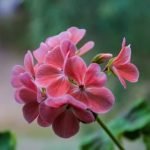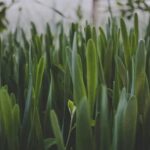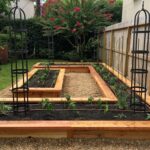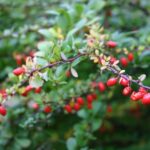Landscape design ideas are essential for creating a beautiful and functional outdoor space. Whether you have a small backyard or a large property, carefully planning and designing your landscape can greatly enhance the overall appeal of your home. In this article, we will explore the various aspects of landscape design, from assessing your space to choosing the right plants and trees, incorporating hardscape elements, utilizing color and texture, adding water features, maintaining your landscape, and budget-friendly ideas.
Landscape design is the art of arranging outdoor spaces to create an aesthetically pleasing environment that complements the natural surroundings and enhances the usability of the outdoor area. It involves careful consideration of elements such as plant selection, hardscape features like patios and pathways, water features, lighting, and overall layout. A well-designed landscape not only adds beauty to your home but also increases its value and provides a peaceful retreat for relaxation and socializing.
Understanding the importance of landscape design is crucial for homeowners who want to make the most out of their outdoor space. By carefully planning and implementing a thoughtful landscape design, you can create an inviting environment that reflects your personal style while maximizing functionality. Whether you’re looking to create a cozy garden retreat or an expansive entertaining area, effective landscape design plays a vital role in achieving your desired outdoor oasis.
Assessing Your Space
When it comes to landscape design ideas, the first step is to assess your outdoor space and understand its layout and potential. This involves taking into consideration the size and shape of your yard, the existing features such as trees, slopes, and any structures that are already in place. By carefully assessing your space, you will be able to visualize how different design elements can be incorporated to enhance the overall aesthetic appeal and functionality of your outdoor area.
One important aspect of assessing your space is understanding how different areas of your yard are used. For example, you may have a sunny spot where you envision creating a flower garden, or a shaded area perfect for a cozy seating nook. By paying attention to how light and shade affect different parts of your yard throughout the day, you can determine which areas are best suited for specific plants or activities.
In addition to considering the natural features of your yard, it’s also important to take into account any potential challenges or limitations that may affect your landscape design plans. This could include issues such as poor soil quality, drainage problems, or the presence of utility lines underground. By being aware of these factors from the beginning, you can work around them and come up with creative solutions that make the most out of your outdoor space.
Choosing the Right Plants and Trees
When it comes to landscape design ideas, choosing the right plants and trees is crucial in creating a visually appealing and functional outdoor space. Whether you’re aiming for a lush garden or a low-maintenance yard, the selection of plants and trees can make or break your design. Here are some key considerations to keep in mind when incorporating both aesthetic and practical elements into your landscape:
- Consider the climate and soil conditions in your area
- Choose native plants that are well-adapted to your region
- Balance evergreen and deciduous trees for year-round interest
- Incorporate a mix of flowering plants, shrubs, and grasses to add visual variety
- Think about the mature size of each plant to avoid overcrowding in the future
In addition to aesthetics, it’s important to consider the practical benefits of your plant and tree choices. For example, strategically placed trees can provide shade during hot summer months, while certain plants can help with erosion control or attract beneficial wildlife. By carefully selecting a combination of both aesthetically pleasing and functional flora, you can create a balanced and sustainable landscape that enhances your outdoor living experience.
When planning the layout of your plants and trees, take into account factors such as sun exposure, water requirements, and potential maintenance needs. Grouping together plants with similar needs can simplify watering and care routines, while also creating cohesive visual impact in different areas of your yard. With thoughtful consideration of both aesthetic appeal and practical functionality, you can achieve a harmonious balance in your landscape design that brings beauty and purpose to your outdoor space.
Hardscape Elements
When it comes to landscape design ideas, incorporating hardscape elements is essential to creating a functional and visually appealing outdoor space. Pathways, patios, and other features can not only provide practical benefits but also add character and charm to your landscape. Here are some ideas for incorporating hardscape elements into your outdoor design:
- Pathways: Consider adding pathways made of materials like gravel, pavers, or natural stone to connect different areas of your yard. Whether it’s a winding path through a garden or a straight walkway leading to the front door, well-designed pathways can enhance the overall flow of your landscape.
- Patios: A patio provides an outdoor living space for relaxation and entertainment. Choose the right location for your patio based on factors such as sun exposure, privacy, and proximity to the house. The material you select for your patio, whether it’s concrete, brick, or wood, should complement the overall style of your home and landscape.
- Functional Features: Look beyond traditional pathways and patios and consider other hardscape elements that can serve a practical purpose. This might include retaining walls to level out sloped areas, pergolas for shade and structure, or built-in seating for added comfort.
Incorporating these hardscape elements into your landscape design can elevate the functionality and aesthetic appeal of your outdoor space. By carefully selecting materials and considering the layout of your yard, you can create a cohesive and inviting environment that enhances your overall property.
Color and Texture
Adding color and texture to your landscape design is a crucial element in creating visual interest and enhancing the overall appeal of your outdoor space. By carefully selecting a variety of plants and materials, you can add depth, dimension, and personality to your landscape.
Plant Selection
When choosing plants for your landscape, consider incorporating a mix of flowering plants, shrubs, and foliage with different colors, shapes, and sizes. This diversity will create visual interest throughout the seasons as different plants bloom and change throughout the year. Additionally, make sure to consider the growth habits of each plant to ensure they complement each other and create a harmonious look.
Materials for Texture
In addition to plant selection, incorporating various materials into your landscape can also add texture and visual appeal. Utilize materials like gravel or mulch to create distinct pathways or garden borders. Incorporating natural stone or wood elements can also add warmth and character to your outdoor space. Consider using a combination of these materials to add contrast and visual interest while tying together different areas of your landscape design.
By carefully considering both plant selection and material usage in your landscape design ideas, you can create an outdoor space that not only looks visually stunning but also reflects your personal style. Remember that experimenting with different combinations of color and texture can lead to unique and eye-catching results for your yard.
Incorporating Water Features
One popular water feature is a simple fountain, which can be added to any outdoor space, regardless of size. The sound of trickling water can create a calming atmosphere, making it the perfect addition for relaxation areas such as meditation gardens or outdoor seating areas. In addition, fountains come in various designs and materials, allowing you to choose one that fits the aesthetic of your landscape.
Another way to incorporate water into your landscape is by installing a pond. Ponds are an excellent habitat for wildlife and can bring additional visual interest to your yard. You can also consider adding fish or aquatic plants to your pond for an added natural touch. However, it’s important to carefully plan the installation of a pond to ensure that it fits seamlessly into your landscape design and doesn’t overwhelm the space.
Finally, if you have the space and budget for it, consider installing a larger water feature such as a waterfall or stream. These features not only add visual appeal but also provide ambient noise that can drown out traffic sounds or other unwanted noise from nearby areas. Regardless of which type of water feature you choose, incorporating this element into your landscape design can greatly enhance the overall look and feel of your outdoor space.
| Water Feature | Description |
|---|---|
| Fountain | A simple yet effective way to add soothing sounds and visual appeal to any outdoor area. |
| Pond | An excellent habitat for wildlife while adding an interesting focal point to your landscape design. |
| Waterfall or Stream | Larger features that provide both visual appeal and ambient noise for creating relaxation and tranquility. |
Maintaining Your Landscape
Regular Maintenance
Once you’ve implemented your landscape design ideas, the key to keeping it looking beautiful year-round is regular maintenance. This includes tasks such as mowing the lawn, pruning plants and trees, weeding flower beds, and removing any dead or diseased foliage. Regular maintenance not only keeps your landscape looking tidy but also promotes the overall health of your plants and contributes to a thriving outdoor space.
Seasonal Care
Each season brings its own set of maintenance tasks for your landscape. In the spring, you may need to fertilize your plants and clean up any debris leftover from the winter months. Summer requires frequent watering and pest control, while fall is a great time for planting new additions to your landscape. As winter approaches, it’s important to protect sensitive plants from the cold and prepare your outdoor space for the upcoming months of dormancy.
Sustainability Practices
Incorporating sustainable practices into your landscape maintenance not only benefits the environment but also reduces the amount of work required to keep your outdoor space looking beautiful. Consider using native plants that are adapted to your local climate and require less water and maintenance. Collect rainwater for irrigation, use organic fertilizers, and mulch around plants to retain moisture and suppress weeds.
Additionally, integrating compost into your soil improves its quality and reduces the need for chemical fertilizers. By implementing these sustainable practices, you can create a low-maintenance yet stunning landscape design that will remain beautiful year-round.
Budget-Friendly Ideas
When creating a landscape design, it’s important to consider not only the aesthetic appeal but also the cost. There are many budget-friendly ideas that can help enhance your outdoor space without breaking the bank. Whether you’re working with a small or large budget, here are some creative and affordable ways to transform your yard into a beautiful and functional space.
One of the easiest and most cost-effective ways to enhance your outdoor space is by choosing low-maintenance plants. Native plants are a great option as they require minimal water and upkeep. Additionally, they are often more resistant to pests and diseases, saving you money on maintenance and replacement costs. Incorporating mulch in flower beds and around trees can also help retain moisture, suppress weed growth, and improve soil quality, all at an affordable price.
Another budget-friendly idea for enhancing your landscape is to create defined areas using basic landscaping materials like gravel or pavers. These materials can be used to build walkways, patios, or designated garden plots, adding both functionality and visual interest to your yard. This not only adds dimension to your landscape design but also helps prevent erosion in high-traffic areas.
Incorporating edible plants into your landscape design is not only economical but also provides fresh produce for you and your family. Consider planting herbs, fruits, and vegetables in designated garden spaces or even interspersed among ornamental plants for an aesthetically pleasing look that also serves a practical purpose. This can save you money on grocery bills while adding a unique element to your outdoor space.
| Budget-Friendly Idea | Benefit |
|---|---|
| Low-Maintenance Plants | Minimal water and upkeep costs |
| Basic Landscaping Materials | Adds functionality and visual interest while preventing erosion |
| Incorporating Edible Plants | Saves money on grocery bills while adding a practical element |
Conclusion
In conclusion, landscape design ideas are essential for creating a beautiful and functional outdoor space. By assessing your yard’s layout, choosing the right plants and trees, incorporating hardscape elements, adding color and texture, including water features, and maintaining your landscape, you can create a stunning environment that enhances your home. Additionally, implementing budget-friendly ideas allows you to enhance your outdoor space without breaking the bank.
It’s important to remember that landscape design is not just about creating a visually appealing yard; it’s also about maximizing the potential of your outdoor space to create a place where you can relax and enjoy nature. Whether you have a large backyard or a small patio, there are countless ways to incorporate landscape design ideas that suit your style and needs.
Overall, investing time and effort into landscape design can greatly improve the overall look and feel of your property. With proper planning and execution, you can transform your outdoor space into a beautiful oasis that you can enjoy for years to come. So, don’t hesitate to start planning and implementing some of these landscape design ideas in your own yard today.
Frequently Asked Questions
What Are the 7 Principles of Landscaping?
The seven principles of landscaping include unity, balance, proportion, focalization, simplicity, sequence, and rhythm. These principles guide the arrangement and organization of different elements in a landscape design to create a harmonious and visually appealing outdoor space.
Is There a Free App to Design Landscape?
Yes, there are several free apps available for designing landscapes. Some popular options include iScape, Home Outside, and PRO Landscape Home. These apps allow users to digitally plan and visualize their landscape designs by incorporating different plants, structures, and features into a virtual representation of their outdoor space.
How Do You Plan a Landscape Layout?
Planning a landscape layout involves several steps such as assessing the site conditions, determining the functional needs of the space, creating a rough sketch or layout plan, selecting suitable plants and materials, considering factors like sun exposure and soil quality, and finally implementing the chosen design.
It’s important to consider both aesthetics and functionality when planning a landscape layout to ensure that it meets the needs and preferences of the user while also complementing its surroundings.

Welcome to my gardening blog! I am passionate about plants and enjoy sharing my knowledge and experiences with others. In this blog, I will write about everything related to gardening, from tips on how to get started to updates on my own garden projects.





